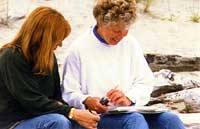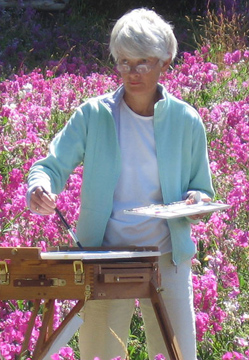I was reminded again last month of the journal of a long distance runner. That journal was described in The New York Times around the time years ago when I was trying to learn to paint. Every day after the long distance runner returned from a run, he jotted down a little bit about that day’s run. It didn’t take much time before the runs blurred together in his mind but he when returned to his journal he was able to see growth and remember things he would have otherwise forgotten.
 I was very frustrated with my slow progress in learning to paint. “Classify the values!” the teacher would say in an oil portrait class. Could I tell which was lighter, the collar or the light on the forehead? No I couldn’t. I felt like crying.
I was very frustrated with my slow progress in learning to paint. “Classify the values!” the teacher would say in an oil portrait class. Could I tell which was lighter, the collar or the light on the forehead? No I couldn’t. I felt like crying.
I decided I would start a journal similar to that of the long distance runner.
After each class, I wrote down in my journal what I thought I had learned from that class. Sometimes it was difficult to be positive: “I think the left eye began to look like an eye in the last 15 minutes of the class,” was the best I could do. But there were Ah ha! moments.
As time passed, when I looked back at earlier entries, I would smirk: “Oh, THAT was bothering me then!” The problem had been solved and a step gained on the journey of learning to be an artist.
Then, one day, I realized that months had gone by since I had made an entry. I searched for the journal and when I found it, discovered my last entry was the first painting that had pleased me. Once I had painted ONE painting that pleased me — even if many of the following ones didn’t — I believed it was possible to learn to express myself in painting and the journal stopped being so important a tool.
I was reminded of this story last month because of an email I received from a student in the class I taught in August in Gibsons B.C. I must confess nothing is more flattering to a teacher than to know he/she has been heard. That was my first reaction. But my second was to urge you, too, to record your Ah Ha moments.
Choose an attractive notebook to be your Art Journal. Keep it handy, and..
- Each time you take a class or a workshop, write down what you believe were the important concepts you gained from the class.
- Also write down the issues that are troubling you — that you feel you have not quite resolved or that you wish to explore further.
- When you make a discovery during your own private painting time, take a moment and write it down. Have you glazed cerulean blue over burnt orange or alizeran crimson in the shadow of a rock? Oh Wow! Look at that!!! Write it down. You might not have to discover it twice.
You will be so glad you did. This book will become invaluable to you.
Let me share a view of the ah ha’s that were sent to me in August after a class similar to the one on color listed in May, 2009:
 Wet on wet doesn’t have to be intimidating if you let the paint dry completely before applying the next layer!
Wet on wet doesn’t have to be intimidating if you let the paint dry completely before applying the next layer!- You can start with staining colours and not wreck your painting right off!
- Quin burnt orange has way more life than burnt sienna!
- Green gold really is a beautiful, useful colour!
- Watercolour paintings don’t run when you immerse them in water!
- Shapes of the values are different from the shape of the things!
- Laying staining colours before sedimentaries lets the colours shine through and inhibits muddying of the paints!
- Background colour influences the colour and effect of the focal area!
- Colour gets driven down into the shadows!
- Paints mixed on paper, not on the palette, give more depth to the painting!
- The edge of the shadow is the darkest!
Those are only some of the list. There are major concepts of the week that are now her very own and there are little personal Ah Ha!s (Here is Ann, the author, in an earlier outdoor class).
Why don’t you get that notebook and start your journal? You will be so glad you did.
Caroline
©Caroline Buchanan, 2008
